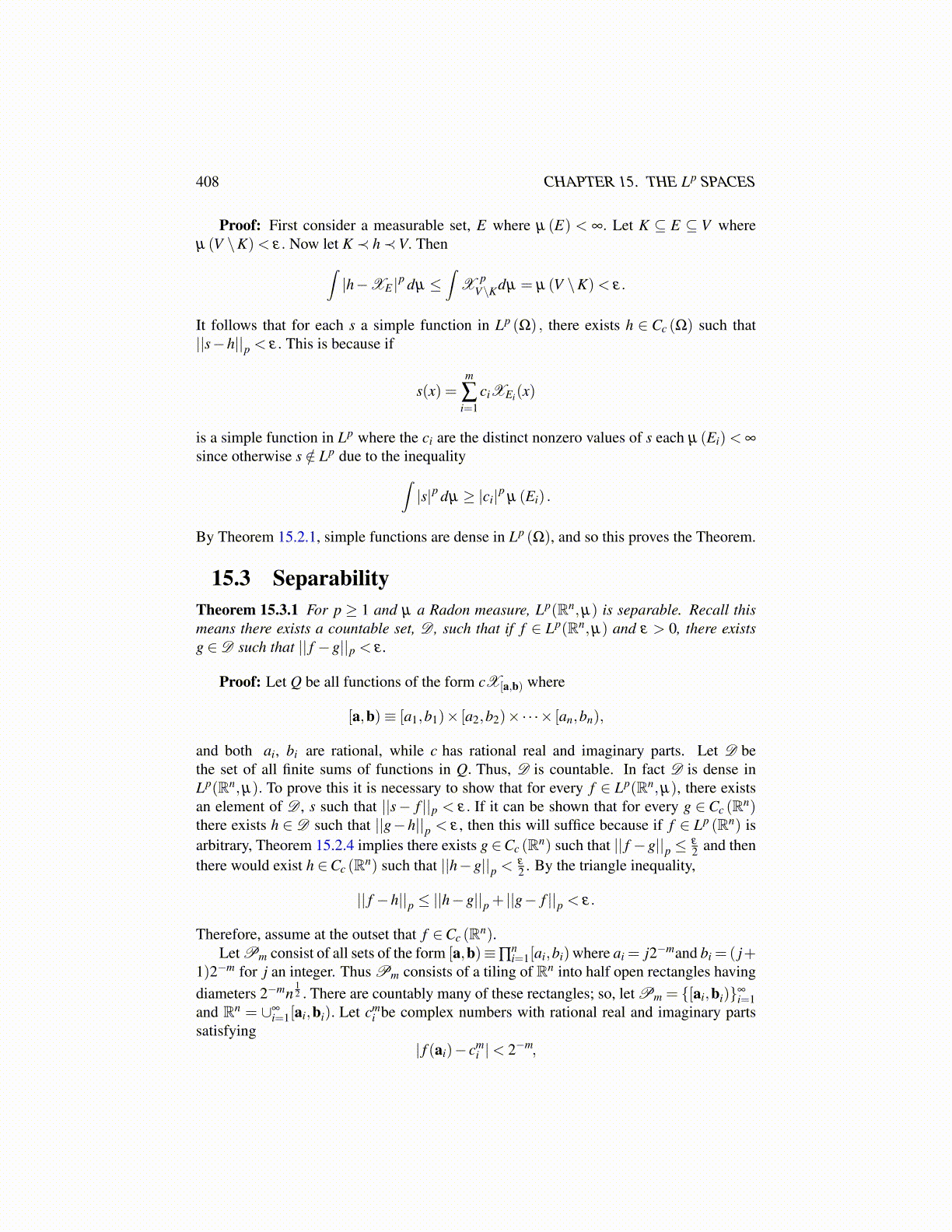
408 CHAPTER 15. THE Lp SPACES
Proof: First consider a measurable set, E where µ (E) < ∞. Let K ⊆ E ⊆ V whereµ (V \K)< ε. Now let K ≺ h≺V. Then∫
|h−XE |p dµ ≤∫
X pV\Kdµ = µ (V \K)< ε.
It follows that for each s a simple function in Lp (Ω) , there exists h ∈ Cc (Ω) such that||s−h||p < ε. This is because if
s(x) =m
∑i=1
ciXEi(x)
is a simple function in Lp where the ci are the distinct nonzero values of s each µ (Ei)< ∞
since otherwise s /∈ Lp due to the inequality∫|s|p dµ ≥ |ci|p µ (Ei) .
By Theorem 15.2.1, simple functions are dense in Lp (Ω), and so this proves the Theorem.
15.3 SeparabilityTheorem 15.3.1 For p ≥ 1 and µ a Radon measure, Lp(Rn,µ) is separable. Recall thismeans there exists a countable set, D , such that if f ∈ Lp(Rn,µ) and ε > 0, there existsg ∈D such that || f −g||p < ε .
Proof: Let Q be all functions of the form cX[a,b) where
[a,b)≡ [a1,b1)× [a2,b2)×·· ·× [an,bn),
and both ai, bi are rational, while c has rational real and imaginary parts. Let D bethe set of all finite sums of functions in Q. Thus, D is countable. In fact D is dense inLp(Rn,µ). To prove this it is necessary to show that for every f ∈ Lp(Rn,µ), there existsan element of D , s such that ||s− f ||p < ε. If it can be shown that for every g ∈ Cc (Rn)there exists h ∈ D such that ||g−h||p < ε , then this will suffice because if f ∈ Lp (Rn) isarbitrary, Theorem 15.2.4 implies there exists g ∈Cc (Rn) such that || f −g||p ≤ ε
2 and thenthere would exist h ∈Cc (Rn) such that ||h−g||p < ε
2 . By the triangle inequality,
|| f −h||p ≤ ||h−g||p + ||g− f ||p < ε.
Therefore, assume at the outset that f ∈Cc (Rn).Let Pm consist of all sets of the form [a,b)≡∏
ni=1[ai,bi)where ai = j2−mand bi =( j+
1)2−m for j an integer. Thus Pm consists of a tiling of Rn into half open rectangles havingdiameters 2−mn
12 . There are countably many of these rectangles; so, let Pm = {[ai,bi)}∞
i=1and Rn = ∪∞
i=1[ai,bi). Let cmi be complex numbers with rational real and imaginary parts
satisfying| f (ai)− cm
i |< 2−m,